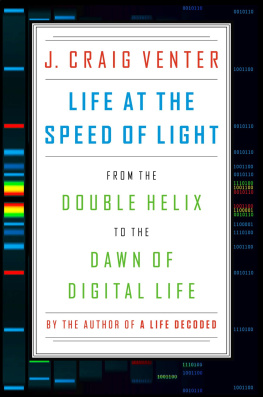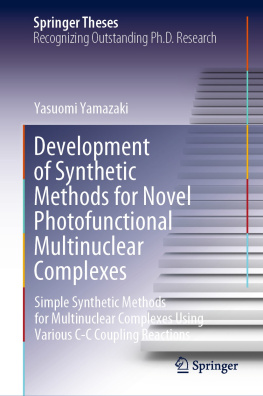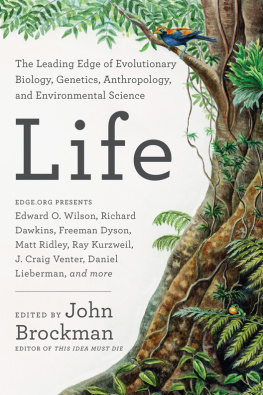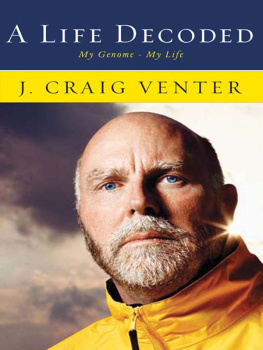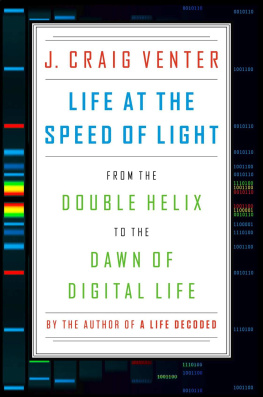ALSO BY J. CRAIG VENTER
A Life Decoded
VIKING
Published by the Penguin Group
Penguin Group (USA) LLC
375 Hudson Street
New York, New York 10014
USA | Canada | UK | Ireland | Australia | New Zealand | India | South Africa | China
penguin.com
A Penguin Random House Company
First published by Viking Penguin, a member of Penguin Group (USA) LLC, 2013
Copyright 2013 by J. Craig Venter
Penguin supports copyright. Copyright fuels creativity, encourages diverse voices, promotes free speech, and creates a vibrant culture. Thank you for buying an authorized edition of this book and for complying with copyright laws by not reproducing, scanning, or distributing any part of it in any form without permission. You are supporting writers and allowing Penguin to continue to publish books for every reader.
LIBRARY OF CONGRESS CATALOGING-IN-PUBLICATION DATA
Venter, J. Craig.
Life at the speed of light : from the double helix to the dawn of digital life / J. Craig Venter.
pages cm
Includes bibliographical references and index.
ISBN 978-1-101-63802-6
1. ScienceSocial aspects. 2. BiologyPhilosophy. 3. Artificial life. 4. Genomics. I. Title.
Q175.5.V44 2013
303.48'3dc23
2013017049
To the team that contributed to making the first synthetic cell a reality: Mikkel A. Algire, Nina Alperovich, Cynthia Andrews-Pfannkoch, Nacyra Assad-Garcia, Kevin C. Axelrod, Holly Baden-Tillson, Gwynedd A. Benders, Anushka Brownley, Christopher H. Calvey, William Carrera, Ray-Yuan Chuang, Jainli Dai, Evgeniya A. Denisova, Tom Deernick, Mark Ellisman, Nico Enriquez, Robert Friedman, Daniel G. Gibson, John I. Glass, Jessica Hostetler, Clyde A. Hutchison III, Prabha Iyer, Radha Krishnakumar, Carole Lartigue, Matt Lewis, Li Ma, Mahir Maruf, Admasu Melanke, Chuck Merryman, Michael G. Montague, Monzia M. Moodie, Vladimir N. Noskov, Prashanth P. Parmar, Quang Phan, Rembert Pieper, Thomas H. Segall-Shapiro, Hamilton O. Smith, Timothy B. Stockwell, Lijie Sun, Granger Sutton, Yo Suzuki, David W. Thomas, Christopher E. Venter, Sanjay Vashee, Shibu Yooseph, Lei Young, and Jayshree Zaveri.
Contents
1Dublin, 19432012
How can the events in space and time, which take place within the boundaries of a living organism, be accounted for by physics and chemistry?... The obvious inability of present-day physics and chemistry to account for such events is no reason at all for doubting that they will be accounted for by those sciences.
Erwin Schrdinger, What Is Life? (1944)
What is life? Only three simple words, and yet out of them spins a universe of questions that are no less challenging. What precisely is it that separates the animate from the inanimate? What are the basic ingredients of life? Where did life first stir? How did the first organisms evolve? Is there life everywhere? To what extent is life scattered across the cosmos? If other kinds of creatures do exist on exoplanets, are they as intelligent as we are, or even more so?
Today these questions about the nature and origins of life remain the biggest and most hotly debated in all of biology. The entire discipline depends on it, and though we are still groping for all the answers, we have made huge progress in the past decades toward addressing them. In fact, we have advanced this quest further in living memory than during the ten thousand or so generations that modern humans have walked on the planet. We have now entered what I call the digital age of biology, in which the once distinct domains of computer codes and those that program life are beginning to merge, where new synergies are emerging that will drive evolution in radical directions.
If I had to pick the moment at which I believe that modern biological science was born, it would be in February 1943, in Dublin, when Erwin Schrdinger (18871961), an Austrian physicist, focused his ), and in part because of the initiative of the then-Taoiseach (Gaelic for prime minister) of Ireland, amon de Valera, who had invited him to work there.
Schrdinger had won the Nobel Prize in 1933 for his efforts to devise an equation for quantum waves, one with the power to explain the behavior of subatomic particles, the universe itself, and everything in between. Now, ten years later, speaking under the auspices of the Dublin Institute for Advanced Studies, which he had helped to found with de Valera, Schrdinger gave a series of three lectures in Trinity College, Dublin, that are still quoted today. Entitled What is Life? The Physical Aspect of the Living Cell, the talks were inspired in part by his fathers interest in biology and in part by a 1935 paper that resulted from an earlier encounter between physics and biology in prewar Germany. German physicists Karl Zimmer and Max Delbrck had then worked with the Russian geneticist Nikolai Timofeff-Ressovsky to develop an estimate of a genes size (about 1,000 atoms), based on the ability of X-rays to damage genes and cause mutations in fruit flies.
Schrdinger began the series at 4:30 P.M. on Friday, February 5, with the Taoiseach sitting before him in the audience. A reporter from Time magazine was present and described how crowds were turned away from a jam-packed scientific lecture. Cabinet ministers, diplomats, scholars and socialites loudly applauded a slight, Vienna-born professor of physics [who] has gone beyond the ambitions of any other mathematician. The next day, TheIrish Times carried an article on The Living Cell and the Atom, which began by describing Schrdingers aim to account for events within a living cell by using chemistry and physics alone. The lecture was so popular that he had to repeat the entire series on the following Mondays.
Schrdinger converted his lectures into a small book that was published the following year, two years before my own birth. What Is Life? has gone on to influence generations of biologists. (Fifty years after he had delivered these remarkable talks, Michael P. Murphy and Luke A. J. ONeill, of Trinity, celebrated the anniversary by inviting outstanding scientists from a range of disciplinesa prestigious guest list that included Jared Diamond, Stephen Jay Gould, Stuart Kauffman, John Maynard Smith, Roger Penrose, Lewis Wolpert, and the Nobel laureates Christian de Duve and Manfred Eigento predict what the next half-century might hold.) I have read What Is Life? on at least five different occasions, and each time, depending on the stage of my career, its message has taken on different meanings along with new salience and significance.
The reason that Schrdingers slim volume has proved so influential is that, at its heart, it is simple: it confronted the central problems of biologyheredity and how organisms harness energy to maintain orderfrom a bold new perspective. With clarity and concision he argued that life had to obey the laws of physics and, as a corollary, that one could use the laws of physics to make important deductions about the nature of life. Schrdinger observed that chromosomes must contain some kind of code-script determining the entire pattern of the individuals future development. He deduced that the code-script had to contain a well-ordered association of atoms, endowed with sufficient resistivity to keep its order permanently and explained how the number of atoms in an aperiodic crystal could carry sufficient information for heredity. He used the term crystal to suggest stability, and characterized it as aperiodic, which unlike a periodic, repeating pattern (which, explained

